Generating an unfoldase from thioredoxin-like domains
- PMID: 19289469
- PMCID: PMC2676037
- DOI: 10.1074/jbc.M808352200
Generating an unfoldase from thioredoxin-like domains
Abstract
Protein-disulfide isomerase (PDI), an endoplasmic reticulum (ER)-resident protein, is primarily known as a catalyst of oxidative protein folding but also has a protein unfolding activity. We showed previously that PDI unfolds the cholera toxin A1 (CTA1) polypeptide to facilitate the ER-to-cytosol retrotranslocation of the toxin during intoxication. We now provide insight into the mechanism of this unfoldase activity. PDI includes two redox-active (a and a') and two redox-inactive (b and b') thioredoxin-like domains, a linker (x), and a C-terminal domain (c) arranged as abb'xa'c. Using recombinant PDI fragments, we show that binding of CTA1 by the continuous PDIbb'xa' fragment is necessary and sufficient to trigger unfolding. The specific linear arrangement of bb'xa' and the type a domain (a' versus a) C-terminal to bb'x are additional determinants of activity. These data suggest a general mechanism for the unfoldase activity of PDI: the concurrent and specific binding of bb'xa' to particular regions along the CTA1 molecule triggers its unfolding. Furthermore, we show the bb' domains of PDI are indispensable to the unfolding reaction, whereas the function of its a' domain can be substituted partially by the a' domain from ERp57 (abb'xa'c) or ERp72 (ca degrees abb'xa'), PDI-like proteins that do not unfold CTA1 normally. However, the bb' domains of PDI were insufficient to convert full-length ERp57 into an unfoldase because the a domain of ERp57 inhibited toxin binding. Thus, we propose that generating an unfoldase from thioredoxin-like domains requires the bb'(x) domains of PDI followed by an a' domain but not preceded by an inhibitory a domain.
Figures
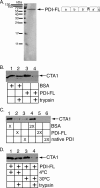
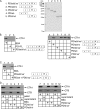
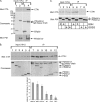
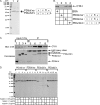
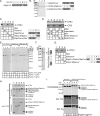
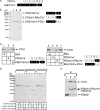
References
-
- Goldberger, R. F., Epstein, C. J., and Anfinsen, C. B. (1964) J. Biol. Chem. 239 1406-1410 - PubMed
-
- Schelhaas, M., Malmstrom, J., Pelkmans, L., Haugstetter, J., Ellgaard, L., Grunewald, K., and Helenius, A. (2007) Cell 131 516-529 - PubMed
-
- Park, B., Lee, S., Kim, E., Cho, K., Riddell, S. R., Cho, S., and Ahn, K. (2006) Cell 127 369-382 - PubMed
Publication types
MeSH terms
Substances
LinkOut - more resources
Full Text Sources
Miscellaneous

